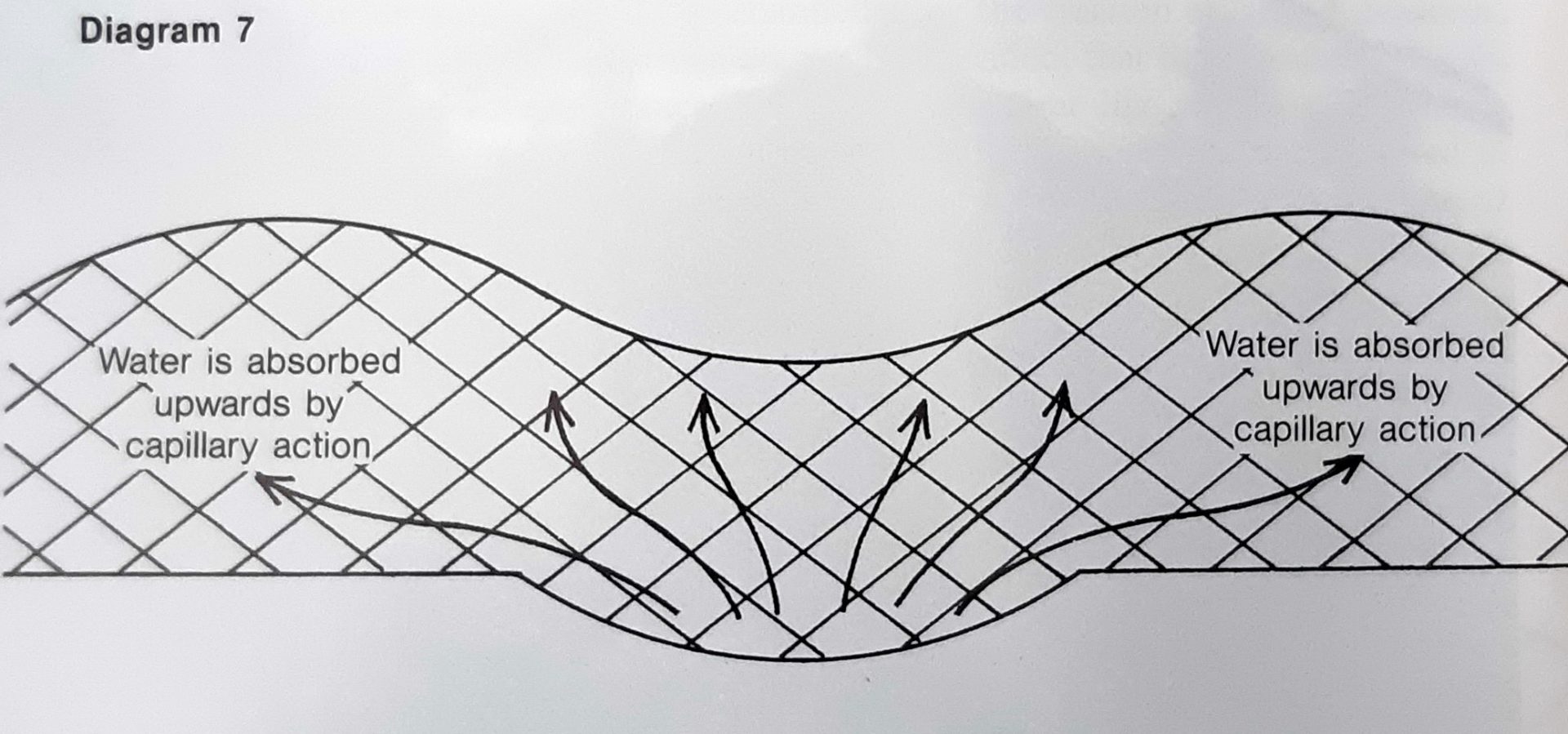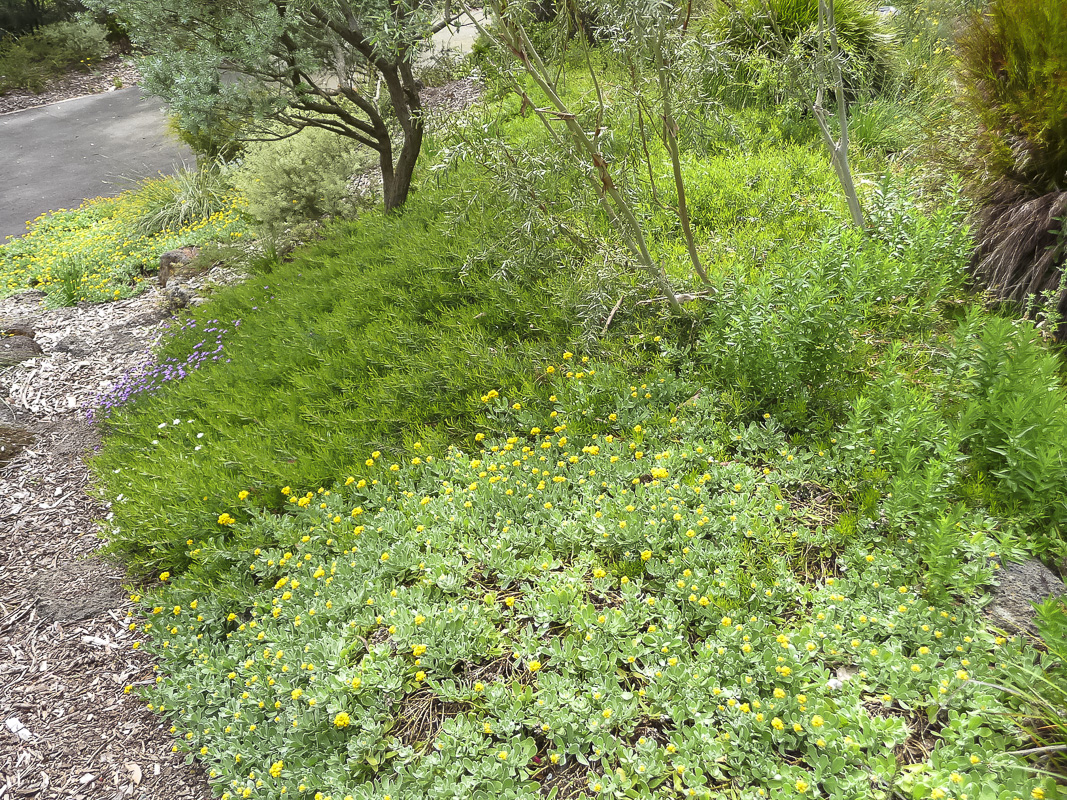Given the way the climate is headed, we should consider how to design our native gardens for climate change. I live and garden on a north facing hillside south-east of Melbourne on clay soils.
The reality of climate change
Apparently there was still debate in the community about the reality of climate change and its impact. Sadly, that may be true. But there is no debate amongst the vast majority of the scientists examining changes in our climate. I don’t even think there is a debate on a political level about the reality of climate change and the role of human activities bringing it on. Yes, some truths are inconvenient.
The climate outlook for Melbourne
This is a La Nina year (2022) when Australia experiences higher than normal rainfall and South America drier conditions. I was hopeful we would get some decent rains over summer. But as often happens the effects of La Nina struggle to penetrate as far south as Melbourne. For NSW and Queensland, monsoon season plus La Nina and climate change has resulted in a disastrous amount of rainfall.
The long-term outlook for Melbourne is for hotter, drier and windier. Thankfully we have not had excessive wind this summer or days over 40 degrees C. However we have had low rainfall and an abundance of hot weather.
Strategies to safeguard the garden
Nothing I am going to say is the solution for unprecedented rain events or really extended droughts. There is nothing anyone can do to safeguard a garden against being shredded by a vicious hailstorm. Some strategies are valuable for establishing a new garden or renewing an existing garden, regardless of location. All the ideas are good for normal weather times. But with climate change they become more important in helping to make a garden more resilient to increased variability in the weather.
Mounding and channelling
If you were starting a garden from scratch then a design idea explored by John Hunt in his extremely practical guide, ‘Creating an Australian Garden’, is worth considering.
The idea is to use mounding and channelling to harvest water run-off from the mounds. This way it can be stored at depth and accessed by plants during low rainfall times through capillary action. It helps plants establish deep roots. This compares with watering which favours surface root development and is most likely to be damaged in dry times.




The mounds and channels can be formed within or between garden beds. They can double as dry creek beds or even paths. This works as long as the water doesn’t easily drain away rather than being stored at depth. I learned about this after starting my garden and have been able to use it in remodelling parts of the garden. I need to capture water being shed from a reasonably steep slope.
Until I was on town water, sewage waste water was pumped to the top of the hill and drained away gradually through pipes placed at depth. They snaked their way over the hillside covered with stones. Inadvertently this may have been a useful way of getting rainwater too at depth.
Establishing paths that cut across the slope
Establishing paths running across the slope slows the water down as well. Deliberate depressions beside a driveway and within beds have also been used. Plants are not placed in the channel area as a rule but on the sides or tops of the mounds. When they mature it is not always easy to see the undulations. This is especially so if you are growing a mix of plants with horizontal and vertical growth habits.


Soil conditions
Hunt goes on to look at soil which needs to hit that Goldilocks sweet spot between draining too well and retaining too much moisture. The solution to soils retaining or shedding too much water is agreed to be the addition of humus. This is better than the introduction of foreign soils especially with respect to planting indigenous species. It is important to protect soils, and the all-important micro-organism living in them, by using either organic or inorganic mulch. Over time prostrate plants can grow and spread taking over this job as well as giving voids/space to the plant design. Rocks of a reasonable size can help provide a cool root run and even shade for small plants.

Gardens in the shade
With so much more sun and wind, I’m all for organising shade in the garden. This means there will be gardens in the shade! It was very difficult to work in the garden on a bare north facing hillside, before trees and shrubs provided shade. Shifting shade is great for most plants, which, I hazard to say, are mostly understorey plants in nature. I note that plants exposed to too much sun suffer from bleaching. The same plant in part shade will do much better all things being equal. Shade is a great relief for the gardener wanting to work outside, particularly in summer. A house and/or the surrounding surfaces will benefit hugely from being shaded in summer.
It is a scientific fact that it is cooler in the shade. But you might find it surprising how large that temperature difference can be. This temperature difference was made clear in a segment of ‘Gardening Australia’ aired on February 25, 2022.
So, the selection and placement of trees is critical in the planting design of your garden for shade. It’s also critical for supporting wildlife remembering that birds use trees as their highways. Trees and large shrubs also protect the garden from wind as they shield, deflect or break up the wind.
Knowing plants for climate change
Knowledge about plants and their selection is critical, and the criterion for choosing a plant are multiple. The function of the plant in terms of size and shape is one factor, how each plant ‘fits’ with surrounding plants in terms of foliage type and foliage colour is another, and then there is the question of how happy a plant will be with the growing conditions of a particular spot in the garden. I am lucky to have a full set of Elliot and Jones ‘Encyclopaedia of Australian Plants’ which gives invaluable information on the likely best growing conditions for a plant. Perhaps there is information on the web that provides this detailed information.
I have found it useful to visit gardens around Melbourne to see how plants are growing – their shape, size and growing conditions. Talking to and getting advice from Australian plant enthusiasts is useful too. You can’t build a garden on impulse buys or constantly trying to grow difficult to grow plants. If you are somewhat conservative in trying to build most of your garden with plants tolerant of the conditions you have, even without the addition of watering, then you can generally find room for experimentation as well. I know I do.
Active and timely maintenance
I was on tank water for around 25 years so luckily I have plenty of tank water that can be used for the garden or most importantly to keep water up to the frog ponds. I do not have a watering system, but I do admit to doing some hand watering for new plants. It is more difficult to see how watering can be helpful for established plants growing in a clay soil. As part of my maintenance regime I try to prune plants before the heat of summer or even during summer with the idea that reducing the size of the plant will reduce its needs for water. With a view to protecting the soils and lessening them drying out I leave any plants that have died in the ground until the end of summer. Additionally, I resist removing the browned-off growth of Brachyscome sp and Scaevola sp etc for the same reason – the dead material is protecting the ground and even the root system of plants that will spring back with new growth for the next spring season.
If you concentrate on the health, happiness and the function of a plant i.e. how it fits into the picture or feeling you are trying to create in your garden rather than the colour of flowers which might appear at different times of the year to a neighbouring plant then your garden is more likely to look good year round.
(Diagrams from: Creating an Australian Plant Garden by John M. Hunt, Kangaroo Press in assoc with SGAP NSW, 1986, reprinted 1994)
 Australian Native Plants Society (Australia)
Australian Native Plants Society (Australia)